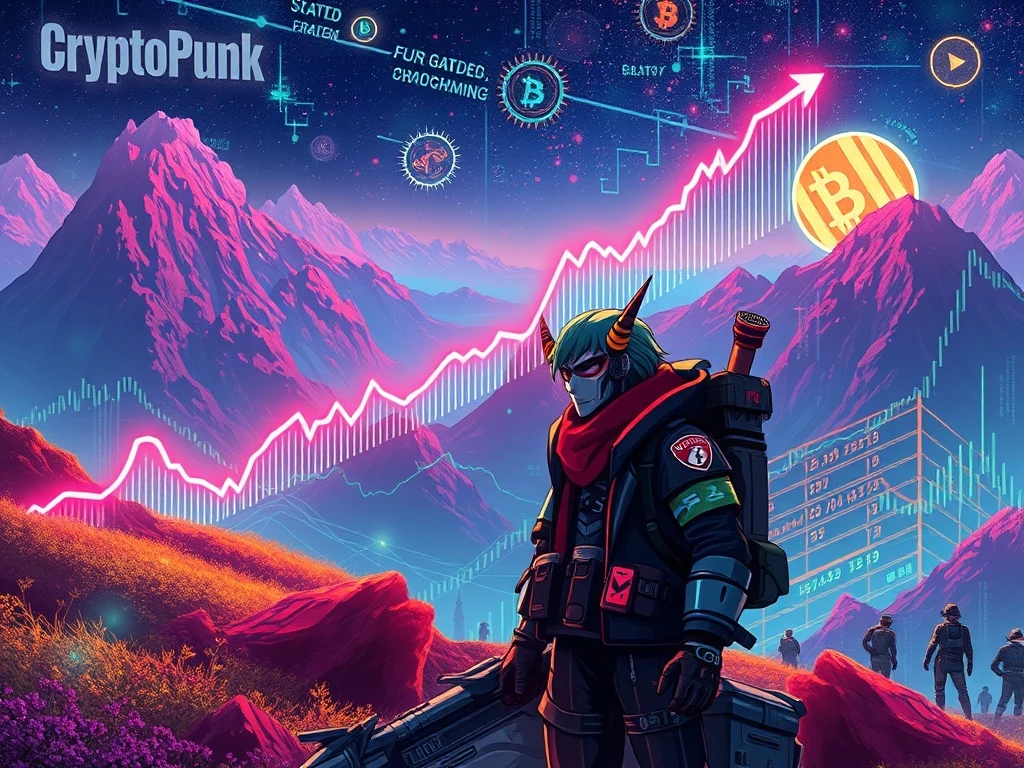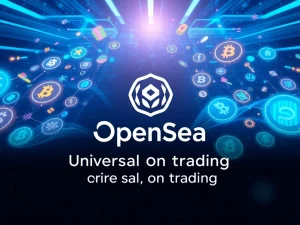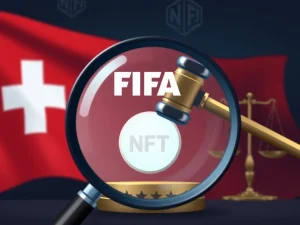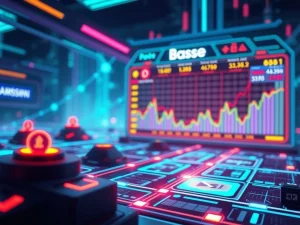NFT Sales Resurgence: CryptoPunks Ignite Explosive 41% Market Boom

The digital art world is buzzing once again! After a period of relative quiet, the NFT market has suddenly sprung back to life, with NFT sales experiencing a significant surge. If you’ve been wondering whether the hype around non-fungible tokens was over, recent data suggests a powerful resurgence is underway, especially for iconic collections.
NFT Sales: A Surprising Rebound?
Recent reports paint a compelling picture: NFT sales have skyrocketed to an impressive $221.5 million in just one week, marking a substantial 41% increase from the previous period. This isn’t just a minor fluctuation; it signals a renewed wave of investor confidence in digital assets. For many, this rebound comes as a pleasant surprise after months of declining activity and bearish sentiment in the broader crypto market.
- Weekly NFT Sales: $221.5 million
- Week-over-week Increase: 41%
- Key Driver: Renewed investor interest amid broader crypto market volatility.
This uptick suggests a shift in momentum for the NFT sector, which has faced significant challenges over the past year. While still lagging behind the all-time highs of late 2021, the current figures indicate a potential turning point for select high-profile segments.
What’s Driving the CryptoPunks Phenomenon?
At the heart of this resurgence lies the astounding performance of CryptoPunks. These pioneering digital collectibles, first launched in 2017, have seen an incredible 590% price jump in just one week! This meteoric rise has captivated collectors and traders alike, reaffirming their status as a benchmark for value in the NFT space.
Why are these pixelated avatars suddenly commanding such premium prices? It speaks to their historical significance, scarcity, and undeniable cultural impact within the blockchain community. They are, in essence, the ‘OGs’ of the NFT world, and their recent performance underscores the enduring appeal of established, high-profile digital art. The surge in CryptoPunks highlights a broader trend of speculative activity within the crypto ecosystem, particularly in niche markets where scarcity and historical significance command premium valuations.
Is the NFT Market Back in Business?
While the overall NFT market is certainly showing encouraging signs of recovery, it’s crucial to understand the nuances. The $221.5 million figure, while a sharp rebound, still pales in comparison to the dizzying heights witnessed in late 2021. The current momentum appears largely concentrated in a select few, high-profile segments, particularly those considered ‘blue-chip’ assets.
This indicates a flight to quality rather than a broad-based market recovery. So, while we’re seeing positive movement, it’s not yet a full-blown return to the previous bull market frenzy. The market’s overall health hinges on sustained investor confidence and broader macroeconomic stability, as crypto markets remain sensitive to shifts in interest rates and global economic conditions.
The Role of Ethereum ETFs in Digital Assets Revival
One significant factor analysts are pointing to for this renewed interest in digital assets, including NFTs, is the growing institutional adoption within the broader crypto ecosystem. Specifically, the recent approval and launch of Ethereum Exchange-Traded Funds (ETFs) have injected a substantial $5.1 billion into the market. This influx of institutional capital often has a ripple effect, as investors seek diversified exposure across various crypto segments.
It’s plausible that a portion of this new capital is finding its way into the NFT space, particularly into established and reputable collections, as investors look for alternative ways to gain exposure to the Ethereum ecosystem and its associated innovations. Additionally, platforms such as OpenSea and Particle Network continue to innovate, with the latter reporting a 45% surge in its PARTI token price following the launch of a Universal SDK aimed at expanding blockchain adoption. These technological advancements may further support NFT liquidity and accessibility, though their long-term impact remains to be seen.
Why Blue-Chip NFTs Are Leading the Charge
The current market dynamics strongly favor Blue-Chip NFTs. These are the established, historically significant, and generally higher-valued collections like CryptoPunks, Bored Ape Yacht Club, and others that have proven their staying power. Investors, especially institutional ones, tend to view these assets as less speculative and more akin to digital art investments with inherent value, compared to the thousands of newer, unproven projects that flood the market.
This ‘flight to quality’ is a common theme in volatile markets, where investors seek safety and perceived stability in established assets. The resilience of these blue-chip collections suggests a maturation of the NFT market, where genuine value and historical importance are increasingly recognized. For now, the NFT market’s revival hinges on its ability to attract and retain both retail and institutional participants.
Navigating the Volatility: A Word of Caution
Despite the promising rebound, it’s crucial to remember that the NFT market remains inherently volatile and speculative. Regulatory uncertainties persist, and market sentiment can shift rapidly. Investors are advised to approach NFTs with caution, given their speculative nature and exposure to regulatory uncertainties. The long-term sustainability of this rebound will depend on continued innovation, broader adoption, and a clearer regulatory landscape.
Conclusion
The recent surge in NFT sales, spearheaded by the remarkable performance of CryptoPunks, offers a beacon of hope for the digital collectibles market. While the impressive 41% increase and the staggering 590% jump for CryptoPunks are undeniable indicators of renewed interest, the broader NFT market is still navigating its path towards mainstream acceptance. The influence of Ethereum ETFs and the clear preference for Blue-Chip NFTs highlight a maturing ecosystem, but caution remains paramount. Whether this is a sustainable trend or another fleeting spike, only time will tell. For now, the world of digital assets is certainly proving it has plenty of surprises left.
Frequently Asked Questions (FAQs)
1. What are CryptoPunks and why are they considered significant?
CryptoPunks are one of the earliest and most iconic NFT collections, launched in 2017. They consist of 10,000 unique pixel-art characters. Their significance stems from their pioneering role in the NFT space, their scarcity, and their cultural impact, making them a benchmark for value in the digital art world.
2. What factors contributed to the recent surge in NFT sales?
The recent surge in NFT sales, particularly the 41% increase to $221.5 million, is attributed to renewed investor interest in digital assets, speculative activity in niche markets, and potentially the spillover effect from new capital entering the crypto market, such as from Ethereum ETFs.
3. How do Ethereum ETFs impact the NFT market?
The approval and launch of Ethereum Exchange-Traded Funds (ETFs) have injected billions of dollars into the broader crypto market. This influx of institutional capital can lead to diversified exposure, with some funds potentially flowing into adjacent sectors like NFTs, especially into established and reputable collections.
4. What does ‘Blue-Chip NFTs’ mean?
‘Blue-Chip NFTs’ refer to established, historically significant, and generally higher-valued NFT collections that have demonstrated long-term staying power and value. Examples include CryptoPunks and Bored Ape Yacht Club. They are often viewed as less speculative than newer projects and are preferred by investors seeking perceived stability in volatile markets.
5. Is the current NFT market rebound sustainable?
While the recent rebound is promising, the sustainability of the NFT market’s recovery remains uncertain. It is currently concentrated in a small subset of projects (blue-chip NFTs) and is sensitive to broader macroeconomic conditions and regulatory developments. Investors are advised to remain cautious due to the market’s inherent volatility and speculative nature.









